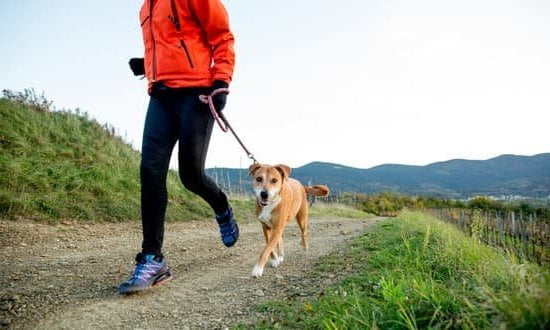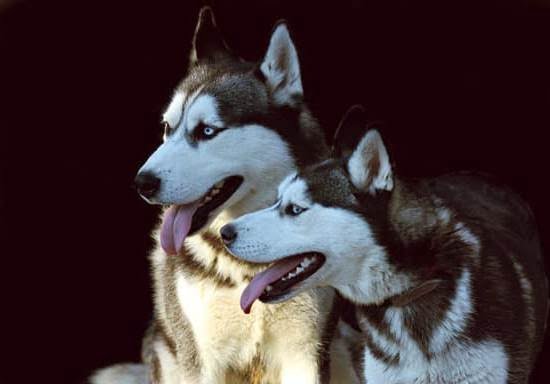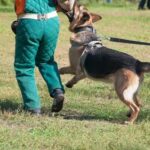Whether you live in a bustling city or a quiet suburban neighborhood, the noise of a dog’s energetic playtime can sometimes disrupt the peace and tranquility of your home and community. Training your dog to play quieter is not only considerate to your neighbors, but it also benefits your pet’s well-being. In this article, we will explore the importance of training a dog to play quieter and provide useful tips on how to achieve this goal.
Dogs are naturally playful creatures, and their excitement during playtime often leads to loud barks, rough movements, and noisy toys. While their exuberance is endearing, excessive noise can be stressful for both dogs and their owners.
It can instigate disturbances within the household and create annoyance among neighbors who may value peace and quiet. By teaching your dog to engage in a more subdued manner during play, you can maintain harmony in your home and ensure that everyone enjoys a peaceful environment.
Understanding why dogs become loud during play is crucial for implementing effective training techniques. Canines have an innate instinct for enjoyment and exploration, which drives them to engage in playful activities enthusiastically. However, without proper guidance and boundaries, this natural playfulness can escalate into boisterous behavior that disturbs those around them. By comprehending these tendencies, we can work towards redirecting their energy into quieter activities while still promoting mental stimulation and bonding with our furry companions.
In the following sections of this article, we will delve deeper into the negative impact of excessive noise during playtime on both dogs and humans. Additionally, we will discuss practical methods for creating a designated quiet play space for your dog as well as how to teach them important commands such as “quiet.” With consistency, patience, and effective communication techniques employed within our training methods, we can ultimately achieve peaceful playtime sessions with our beloved pets.
Understanding the Natural Playfulness of Dogs
Dogs are naturally playful animals, and their playful behavior is an essential part of their overall well-being. Understanding the reasons behind their playfulness can help dog owners better manage and train them to play quieter.
The Inherent Playfulness in Canine Nature
It is important to recognize that dogs have an innate instinct to play. Play is not only a way for them to burn off excess energy but also a means of communication and social interaction. Just like human children, dogs explore their surroundings, learn new skills, and strengthen social bonds through play. This inherent playfulness is an integral part of their nature, and suppressing it entirely can have negative consequences on their mental and emotional health.
The Role of Excitement in Loud Play
One reason for excessive noise during playtime is the excitement that dogs feel when engaged in activities they enjoy. Their enthusiasm can cause them to bark, growl, or make other loud sounds as they wrestle with toys or interact with other dogs or humans. Additionally, certain breeds may have a predisposition towards being vocally expressive, making it even more challenging to regulate their volume during play.
Recognizing that this excitement is a normal part of a dog’s behavior helps owners approach training from a place of understanding rather than frustration. By incorporating techniques that address both physical exertion and mental stimulation alongside efforts to reduce noise levels during playtime, owners can successfully train their dogs to keep the volume down while still allowing them to indulge in their natural playfulness.
The Negative Impact of Excessive Noise during Play
Excessive noise during playtime can have several negative impacts on both dogs and those around them. It is important to address this issue to ensure the well-being of everyone involved. Here are some key reasons why excessive noise during play should be taken seriously:
- Stress in Dogs: Excessive noise can lead to stress and anxiety in dogs. Some dogs may become overstimulated and overwhelmed by loud play, which can result in behavioral issues such as aggression or destructive behavior. Additionally, constant exposure to loud noises can make dogs more prone to stress-related health problems like high blood pressure and heart issues.
- Annoyance for Owners and Neighbors: Continuous loud play can be a source of annoyance for pet owners and neighbors alike. It can disrupt the peace and tranquility of a home or neighborhood, making it difficult for people to relax or concentrate on their activities. This annoyance can strain relationships with neighbors and cause unnecessary stress for pet owners.
- Safety Concerns: Loud play often involves roughhousing, jumping, and chasing, which increases the risk of accidents and injuries. Dogs that are highly excited during play may unintentionally knock things over or even hurt themselves or others in the process.
To address these issues, it is crucial to train dogs to play quieter and redirect their energy into calmer activities. By teaching them how to play without excessive noise, you create a more peaceful environment for both your dog and yourself.
Methods for Quieter Play
- Set Clear Boundaries: Establish rules about when, where, and how loud playtime should be conducted with your dog.
- Use Interactive Toys: Provide toys designed for quiet play that engage your dog’s mind and provide mental stimulation.
- Train Basic Commands: Teaching commands like “sit” or “stay” can help your dog focus on you rather than getting overly excited during play.
- Implement Positive Reinforcement Techniques: Reward your dog with treats or praise when they exhibit quieter play behavior, reinforcing calmer habits.
By following these techniques and consistently reinforcing positive behavior, you can gradually train your dog to engage in quieter play and create a more harmonious living environment for everyone involved.
The Importance of Training and Communication
Training and communication are essential elements in maintaining a quiet and peaceful playtime environment for your dog. By focusing on these aspects, you can effectively teach your dog to play quieter and minimize excessive noise.
One important aspect of training is establishing clear boundaries and rules for your dog during playtime. Dogs thrive on structure, so setting consistent expectations will help them understand what is acceptable behavior. Utilize positive reinforcement techniques, such as rewarding your dog with treats or praise when they exhibit quiet play behavior. This helps reinforce the desired behavior and encourages them to continue playing quietly.
Communication is also key when it comes to training your dog to play quieter. Use verbal cues consistently, such as saying “quiet” or using a specific word that you have chosen as the command for calmness during playtime. Reinforce this command by providing rewards when they respond appropriately. It’s important to be patient and consistent while teaching this command, as dogs may take time to fully understand and respond.
In addition to verbal cues, body language can also be utilized to communicate with your dog during playtime. When your dog starts playing too loudly, adopt a calm demeanor yourself by using low body language and avoiding any overexcitement that may encourage their noisy behavior. By projecting a sense of calmness, you can help redirect their energy towards quieter play activities.
By implementing effective training techniques and maintaining open lines of communication with your dog during playtime, you can create an environment where they learn to engage in quieter activities without disrupting the peace and tranquility of your home or neighborhood. Remember to be patient throughout the training process, as it takes time for dogs to fully grasp new behaviors and commands.
Creating a Quiet Play Space
When it comes to training a dog to play quieter, creating a designated quiet play space can be a crucial step. By setting up an area specifically designed for quieter play, you can help minimize noise and create a peaceful environment for both your dog and those around you.
Choose the Right Toys
One important aspect of creating a quiet play space is selecting toys that minimize noise. Avoid toys that squeak or make loud sounds when bitten or shaken, as these can contribute to excessive noise during playtime. Instead, opt for toys made from softer materials or ones specifically designed to be quiet. Look for toys that are labeled as “noiseless” or “silent” to ensure a more peaceful play experience.
Utilize Sound-Absorbing Materials
Another effective way to reduce noise during play is by using sound-absorbing materials in the designated play area. Consider placing rugs or mats on the floor to absorb sound vibrations and minimize echoes. You could also hang curtains or tapestries on walls to help dampen noise. By incorporating these materials into the play space, you can create a quieter environment that helps to contain and muffle any excessive noise that may occur during playtime.
Create Boundaries
To further reinforce the concept of quiet play, it can be helpful to establish physical boundaries within the designated play space. Use baby gates or pet fences to enclose the area so that your dog understands where their play is meant to take place. This will help them associate this specific space with quieter and more controlled behavior.
Remember, dogs thrive on consistency and routine, so try to consistently use this designated quiet play space whenever possible. Over time, they will learn that this particular area is meant for calmer and quieter forms of play.
By implementing these tips and creating a designated quiet play space, you can significantly reduce the noise level during playtime with your dog. Not only will this benefit you and your household, but it will also contribute to a peaceful coexistence with your neighbors and community.
Teaching the “Quiet” Command
One effective way to train a dog to play quieter is by teaching them the “quiet” command. This command can be used during playtime to signal to your dog that they need to reduce their noise level. Teaching this command requires consistency and patience, but with practice, it can be a valuable tool in creating a quiet and peaceful play environment.
To start training the “quiet” command, it’s important to first establish a clear signal or cue that you will use consistently. This can be a hand signal or a verbal cue such as saying “quiet” in a calm and firm tone. Once you have decided on the cue, you can begin incorporating it into your dog’s playtime routine.
During play, pay close attention to your dog’s noise level. The moment you notice them getting too loud or boisterous, calmly say the cue and immediately stop playing. Then, wait for a moment of silence before resuming the game. This teaches your dog that excessive noise leads to an interruption in playtime.
After repeating this process multiple times, your dog will start to associate the “quiet” command with the expectation of reducing their noise level. It’s important to praise and reward your dog whenever they respond appropriately by becoming quieter when prompted. Positive reinforcement is key in reinforcing good behavior.
Consistency is crucial throughout this process. Make sure everyone in your household uses the same cue and follows through with interrupting play when necessary. Your dog will learn more quickly if they receive consistent feedback from all family members.
Remember that training takes time and patience, so don’t get discouraged if progress is slow at first. With consistent practice and positive reinforcement, your dog will eventually understand and respond to the “quiet” command during playtime, leading to a more peaceful and enjoyable experience for both you and your furry friend.
Redirecting Energy into Quieter Activities
Dogs are naturally energetic creatures, and sometimes their playfulness can become too loud and disruptive. In order to maintain a quiet and peaceful environment while still allowing your dog to have fun, it is important to redirect their energy into quieter activities. By providing alternative activities that stimulate both their body and mind, you can help your dog channel their energy in a more controlled manner.
One effective way to redirect your dog’s energy into quieter activities is through the use of puzzle toys. These toys are designed to mentally stimulate dogs by presenting them with challenges that require problem-solving skills. By engaging your dog’s mind, puzzle toys not only help reduce excessive noise during play but also provide mental stimulation, which can be just as tiring for your dog as physical exercise.
Another option is to incorporate training exercises that focus on mental stimulation. Teaching your dog new commands and tricks not only helps redirect their energy but also strengthens the bond between you and your furry friend. Simple tasks like “sit,” “stay,” or even more advanced commands like “fetch” can engage your dog’s mind and provide an outlet for their energy without causing excessive noise.
It is important to remember that consistency is key when redirecting your dog’s energy into quieter activities. Make sure to establish a routine for these activities and set aside dedicated time each day for them.
Additionally, be patient with your furry companion as they adjust to these new activities. It may take some time for them to fully understand the purpose of the redirection, but with consistent effort on your part, they will eventually learn to enjoy these quieter alternatives.
In summary, redirecting your dog’s energy into quieter activities is a crucial step in training them to play more quietly. By utilizing puzzle toys and incorporating mental stimulation training exercises, you can provide an outlet for their natural playfulness while minimizing disruptive noise. Remember to be consistent in implementing these activities and be patient with your dog throughout the process. With proper redirection, you and your furry friend can enjoy peaceful playtime together.
| Activity | Description |
|---|---|
| Puzzle Toys | Toys that mentally stimulate dogs through problem-solving challenges |
| Training Exercises | Teaching dogs new commands and tricks for mental stimulation |
Consistency and Patience
Dealing with setbacks is an inevitable part of any training process, including training a dog to play quieter. It is important for dog owners to understand that setbacks are normal and should be expected. Consistency and patience are key when facing setbacks, as they allow for the necessary adjustments and reinforcement needed to help the dog succeed in learning new behaviors.
When faced with a setback, it is important not to get discouraged or frustrated. Instead, take a step back and evaluate the situation objectively. Consider what may have triggered the setback and whether any changes need to be made in your training approach. Reflecting on these factors can help you identify any potential gaps or areas for improvement.
Staying consistent with your training methods is crucial during setbacks. Dogs thrive on routine and repetition, so maintaining a consistent training schedule will help reinforce the desired behavior over time. This includes using the same commands, rewards, and techniques consistently throughout the training process.
Additionally, patience is paramount when dealing with setbacks. It can be frustrating when progress stalls or when a dog regresses in their behavior. However, losing patience or becoming angry will only hinder the overall training progress. Remember that dogs learn at their own pace and may need more time to fully grasp a new command or behavior.
To effectively deal with setbacks, consider revisiting previous steps in the training process to reinforce basic commands before moving forward again. Breaking down complex commands into smaller, more manageable steps can also be helpful in rebuilding confidence and facilitating better understanding.
Overall, setbacks should be viewed as opportunities for growth and learning for both you and your dog. With consistency, patience, and perseverance, you can overcome setbacks together and continue making progress towards achieving a quieter playtime environment.
| Consistency | Patience |
|---|---|
| Maintain a consistent training schedule | Remember that dogs learn at their own pace |
| Use the same commands, rewards, and techniques consistently | Stay calm and avoid becoming angry or frustrated |
| Revisit previous steps in the training process if needed | Break down complex commands into smaller steps |
Enlisting Professional Help
While training your dog to play quieter can be achieved through consistent practice and patience, there may be instances where seeking the assistance of a professional dog trainer becomes necessary. These experts have the knowledge and experience to address specific behavioral issues and provide guidance tailored to your dog’s individual needs. Knowing when it’s time to seek their help can make a significant difference in your training journey.
One situation in which consulting a professional trainer is advisable is if you have tried various techniques and methods consistently without seeing any progress. Sometimes, certain dogs may require additional expertise or specialized training methods that you might not be familiar with. A trainer can assess the specific reasons behind your dog’s excessive noise during playtime and formulate a personalized plan to address the issue effectively.
Another reason to consider enlisting professional help is if your dog’s behavior during play becomes increasingly aggressive or results in injury. Excessive noise during play can sometimes escalate into more serious issues, such as territorial aggression or resource guarding. A trainer will have the skills and knowledge necessary to analyze the root causes of these behaviors and implement appropriate strategies to manage or modify them.
Additionally, if you feel overwhelmed or frustrated with your training efforts, reaching out for assistance can provide much-needed support and guidance. Dog training can be challenging at times, and having an experienced trainer by your side can boost your confidence, offer valuable insights, and provide reassurance during the process.
Remember that seeking professional help doesn’t mean you’ve failed as a dog owner or trainer. On the contrary, it demonstrates your commitment to providing the best care for your furry companion. With their expertise, trainers can often identify underlying issues more quickly and devise effective solutions that promote quieter playtime while strengthening the bond between you and your dog.
Conclusion
In conclusion, training a dog to play quieter is an important aspect of responsible pet ownership. It not only ensures the peace and tranquility of your home or neighborhood but also promotes a harmonious relationship between you and your furry friend. By understanding the natural playfulness of dogs and the negative impacts of excessive noise during play, we can take the necessary steps to create a quiet play space and teach our dogs the “quiet” command.
Creating a designated area for quieter play is crucial in minimizing noise disruptions. Utilizing toys that minimize noise and sound-absorbing materials in the play area can go a long way in creating a peaceful environment for both you and your dog. Additionally, training your dog to understand and respond to the “quiet” command is key. By using positive reinforcement techniques and consistently practicing this command during play, you can effectively communicate your expectations to your dog.
Redirecting your dog’s energy into quieter activities is another helpful strategy. Puzzle toys or training exercises that focus on mental stimulation can help channel their energy into less noisy playtime. Consistency and patience are important throughout this process, as setbacks may occur. Remember that training takes time, so it’s essential to remain consistent with your efforts and be patient with both yourself and your dog.
If you find yourself struggling with training or facing significant challenges, do not hesitate to seek professional help from a dog trainer. They have the expertise and experience needed to guide you through any difficulties you may encounter. Ultimately, by implementing these techniques and approaches, you can enjoy peaceful playtime with your dog while fostering a strong bond based on understanding and effective communication.
Frequently Asked Questions
How do I stop my dog from being so loud?
There are several techniques you can use to stop your dog from being excessively loud. First, it’s important to identify the cause of their barking; whether it’s due to boredom, fear, or a desire for attention. Once you understand what triggers their barking, you can address it appropriately.
Training your dog to respond to commands like “quiet” or “enough” can be helpful in teaching them when it is appropriate to bark and when they should remain quiet. Additionally, providing mental and physical stimulation through regular exercise and engaging toys can help reduce their need for excessive barking. It’s also crucial to remain consistent in enforcing the desired behavior and rewarding them when they exhibit quiet behavior.
What is the 3 bark rule?
The three bark rule is a commonly suggested guideline for dog owners when it comes to managing excessive barking. The idea behind this rule is that if a dog barks three times in a row without any kind of interruption, then there might be something that requires their owner’s attention or intervention.
By addressing the cause of the barking after the third consecutive bark, such as redirecting their focus with a toy or giving them an appropriate command like “quiet,” owners can discourage continuous loud barking and establish more desired behavior patterns.
How do I get my dog to stop barking when playing?
When dogs become overly excited during playtime, they may often start barking excessively. To address this behavior and teach your dog to stop barking while playing, it’s essential to establish clear boundaries through training and reinforcement techniques. One effective method involves interrupting playtime as soon as your dog starts excessively barking by calmly removing yourself from the game without providing any attention or engagement until they calm down.
Once they have settled down, you can resume play in a controlled manner so that they learn that excessive barking results in playtime interruptions. Consistency is key in reinforcing this behavior modification process and rewarding them for staying calm during play sessions helps encourage appropriate behavior over time. Working with a professional dog trainer or behaviorist may also provide you with tailored strategies to address your specific situation.

Welcome to the blog! I am a professional dog trainer and have been working with dogs for many years. In this blog, I will be discussing various topics related to dog training, including tips, tricks, and advice. I hope you find this information helpful and informative. Thanks for reading!





